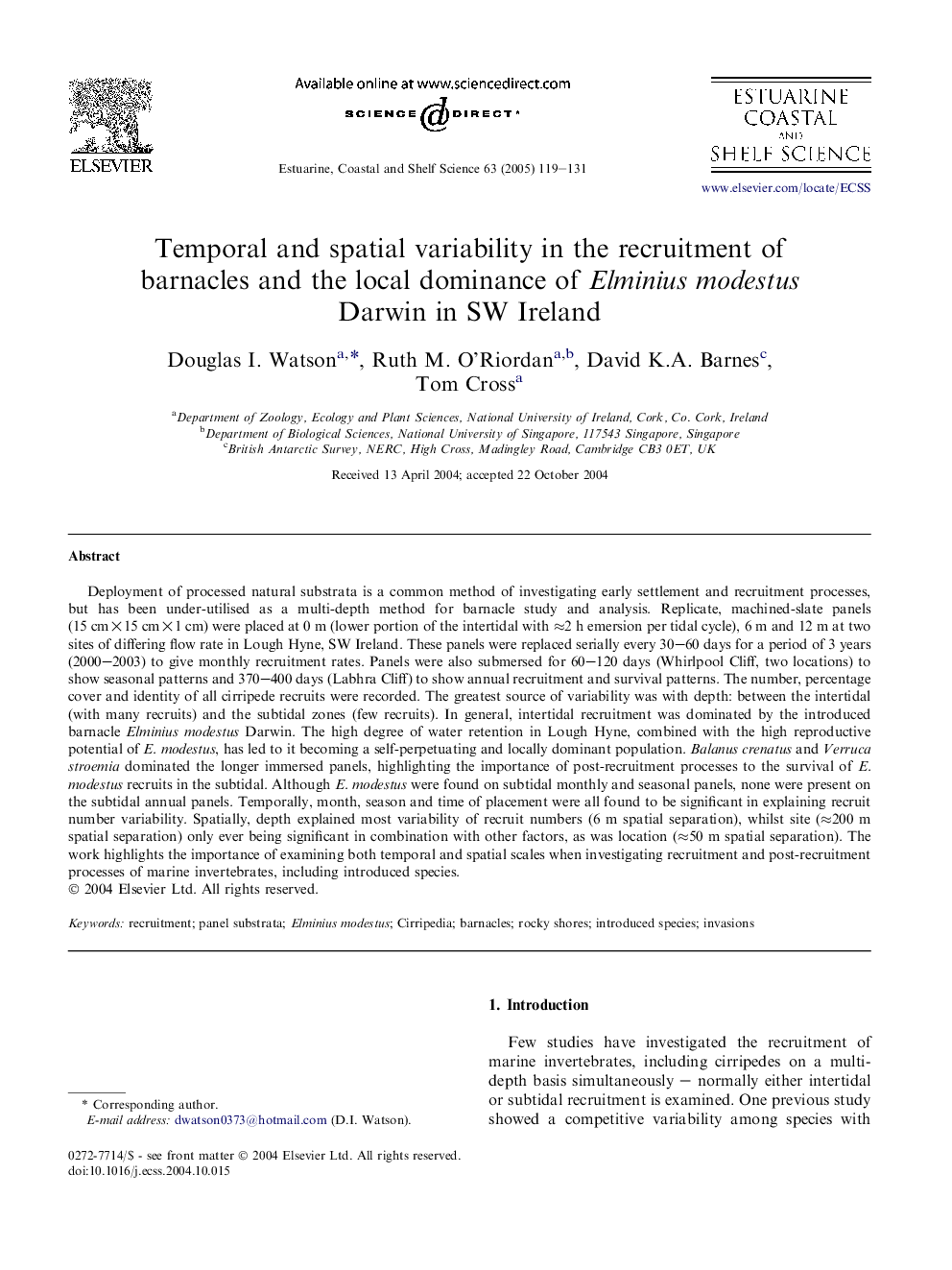| Article ID | Journal | Published Year | Pages | File Type |
|---|---|---|---|---|
| 9480853 | Estuarine, Coastal and Shelf Science | 2005 | 13 Pages |
Abstract
Deployment of processed natural substrata is a common method of investigating early settlement and recruitment processes, but has been under-utilised as a multi-depth method for barnacle study and analysis. Replicate, machined-slate panels (15 cmÃ15 cmÃ1 cm) were placed at 0 m (lower portion of the intertidal with â2 h emersion per tidal cycle), 6 m and 12 m at two sites of differing flow rate in Lough Hyne, SW Ireland. These panels were replaced serially every 30-60 days for a period of 3 years (2000-2003) to give monthly recruitment rates. Panels were also submersed for 60-120 days (Whirlpool Cliff, two locations) to show seasonal patterns and 370-400 days (Labhra Cliff) to show annual recruitment and survival patterns. The number, percentage cover and identity of all cirripede recruits were recorded. The greatest source of variability was with depth: between the intertidal (with many recruits) and the subtidal zones (few recruits). In general, intertidal recruitment was dominated by the introduced barnacle Elminius modestus Darwin. The high degree of water retention in Lough Hyne, combined with the high reproductive potential of E. modestus, has led to it becoming a self-perpetuating and locally dominant population. Balanus crenatus and Verruca stroemia dominated the longer immersed panels, highlighting the importance of post-recruitment processes to the survival of E. modestus recruits in the subtidal. Although E. modestus were found on subtidal monthly and seasonal panels, none were present on the subtidal annual panels. Temporally, month, season and time of placement were all found to be significant in explaining recruit number variability. Spatially, depth explained most variability of recruit numbers (6Â m spatial separation), whilst site (â200 m spatial separation) only ever being significant in combination with other factors, as was location (â50 m spatial separation). The work highlights the importance of examining both temporal and spatial scales when investigating recruitment and post-recruitment processes of marine invertebrates, including introduced species.
Related Topics
Physical Sciences and Engineering
Earth and Planetary Sciences
Geology
Authors
Douglas I. Watson, Ruth M. O'Riordan, David K.A. Barnes, Tom Cross,
